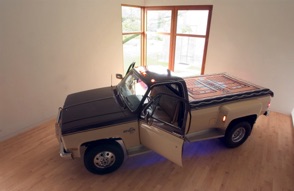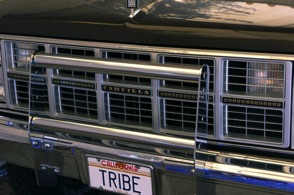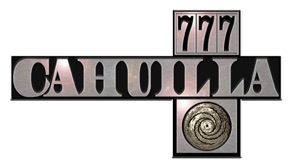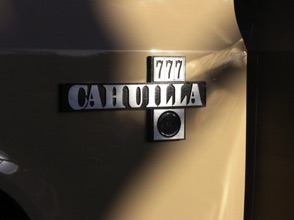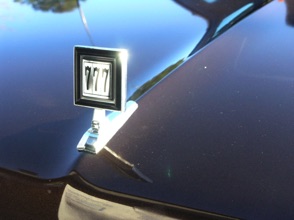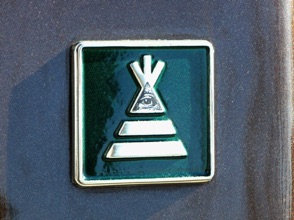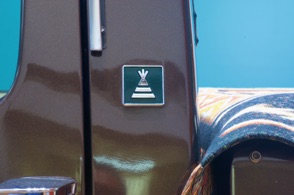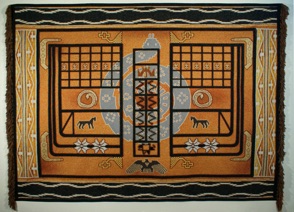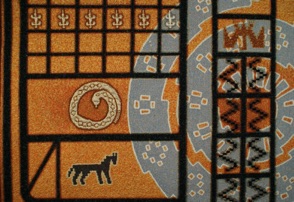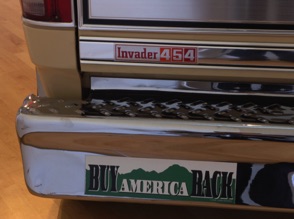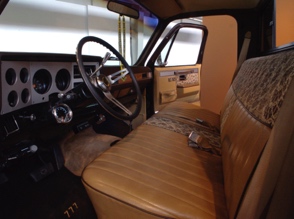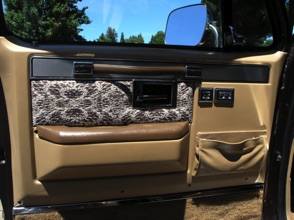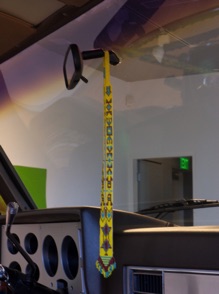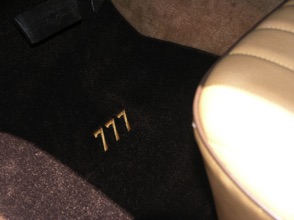Collection of the Autry Museum, Los Angeles
In late 1980, the Cabazon Band of Mission Indians opens the Desert oasis Casino poker parlor on its reservation near Palm Springs, California. Police in riot gear raid it, thus triggering years of lawsuits. Today, one of the largest Native American high rise casinos in the United States is being created at this same reservation.
Like the project, “Conquest,” the construction of a fictional automobile, a 1965 DeSoto Conquest, the “Cahuilla” project is to construct a pickup truck based on the Cahuilla name that reflects the resurgence of Native American economic power in the United States. This 1981 GMC “Cahuilla” is based on the “Silverado and Sierra” series of pickup trucks that General Motors has produced since the 1950’s. Of course, many Native American names have appeared on American motor vehicles: Cherokees, Navajos, Apaches, Comanches, Pontiacs, Thunderbirds, Firebirds, Chiefs, Tacomas and so on.
This 1981 GMC Cahuilla is a “badge-engineered” automobile that takes styling elements to create a version of a powerful truck that symbolizes the new Native American economic riches and tastes. A truck is the perfect desert vehicle, with luxury items such as power steering, windows and air conditioning to couch its driver in comfort.
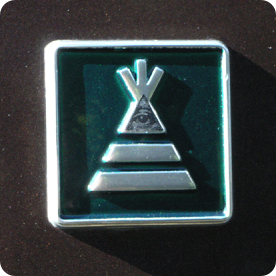
Exterior colors are based on the color of the mountains and sands of the desert; interior patterns are based on 100 dollar bill engraving designs. A tonneau cover laid over the pickup bed is derived from Cahuilla basket weavings and Las Vegas Craps Tables. The emblems reflect luck, “777,” and the tribe, “Cahuilla,” printed in “United States,” a font that is used by the U.S. Treasury Department for paper currency. LED lights are attached to the frame that light the space under the truck with dancing colored lights and the sound system belts out digital tunes from slot machines and ancient Cahuilla songs.
As a member of this group of Native Americans, I have watched the fortunes change for the Cahuilla people since the 1950’s when Native Americans were referred to as “dirty Indians,” a people that lived in poverty, in the dust of the desert, history forsaken and invisible to the suburban America where I grew up.
CATALOG: deSoto.Cahuilla.2015.sm.pdf
More information about Cahuilla Indians and Cahuilla Casinos:
Return of the Buffalo (The Story Behind America’s Indian Gaming Explosion) by Ambrose I. Lane, Sr. Published by Bergin & Garvey 1995

